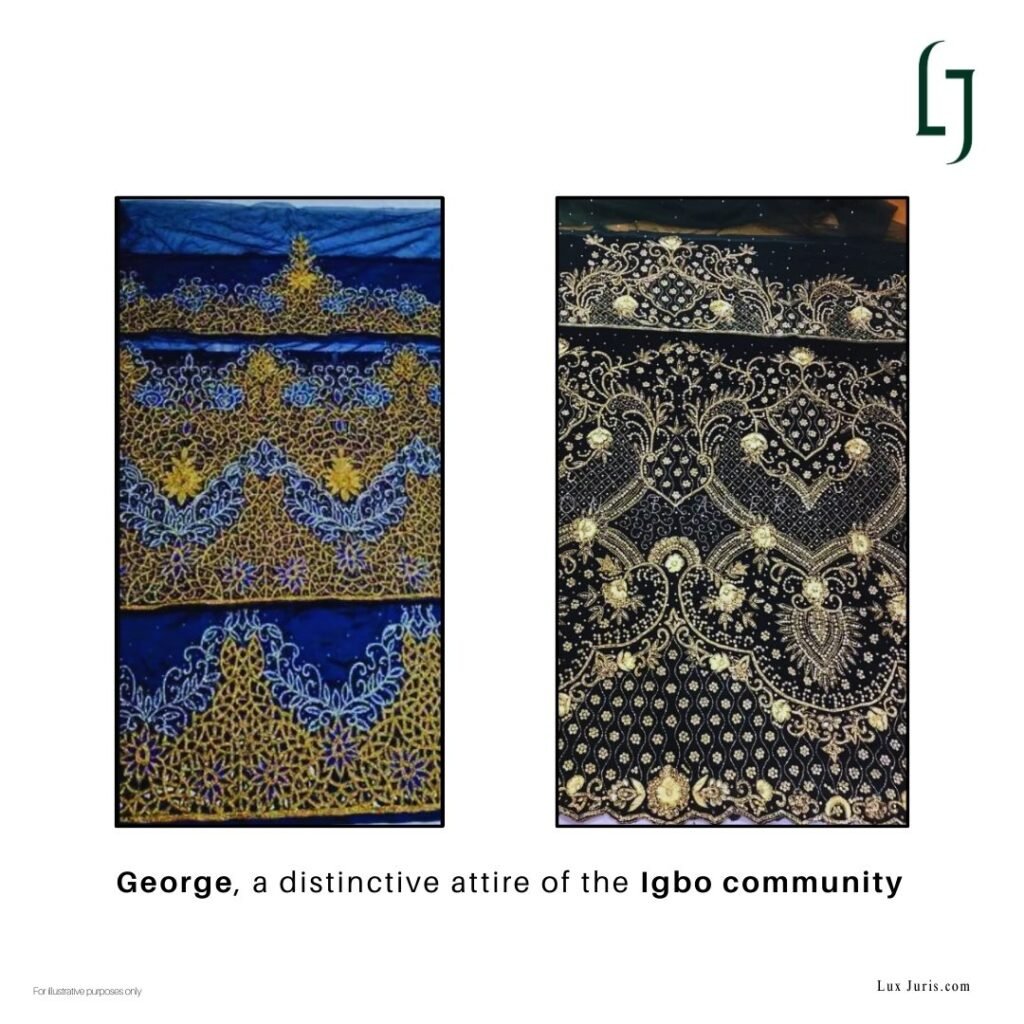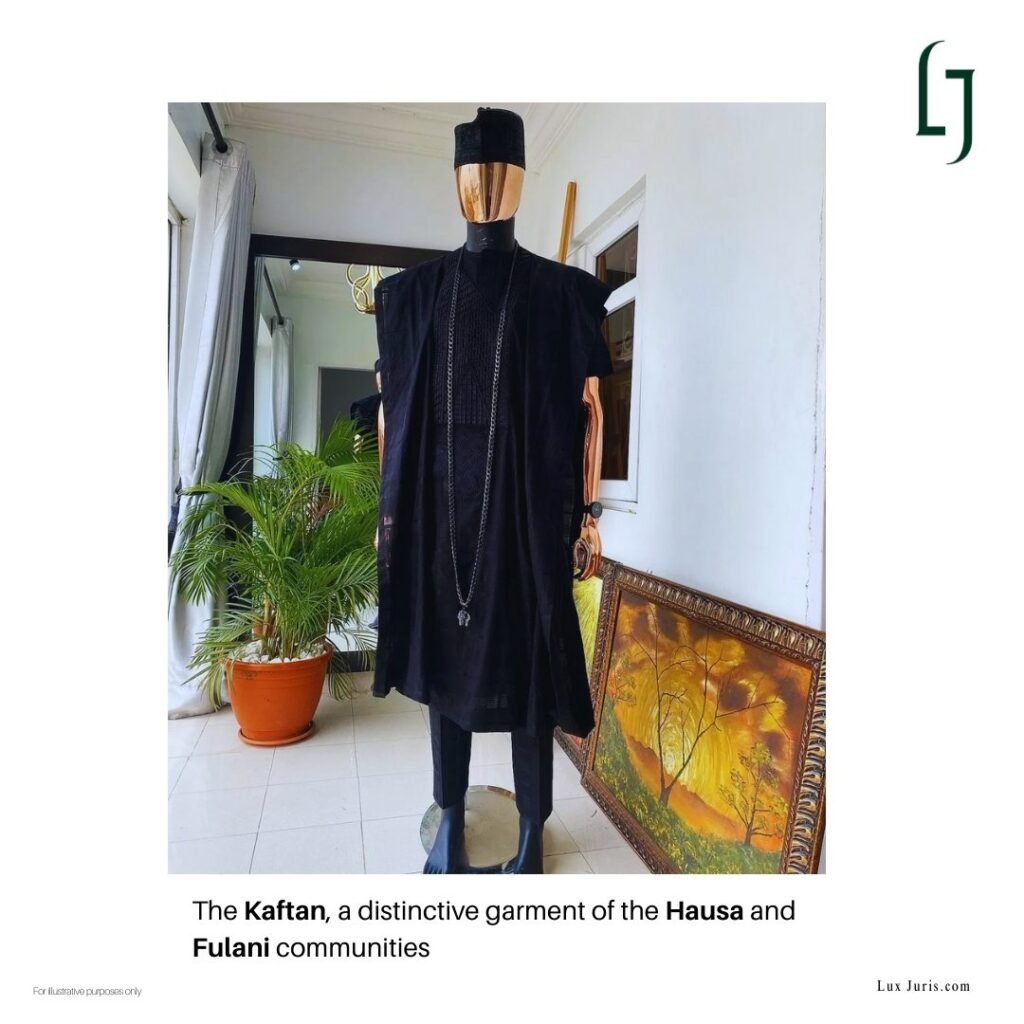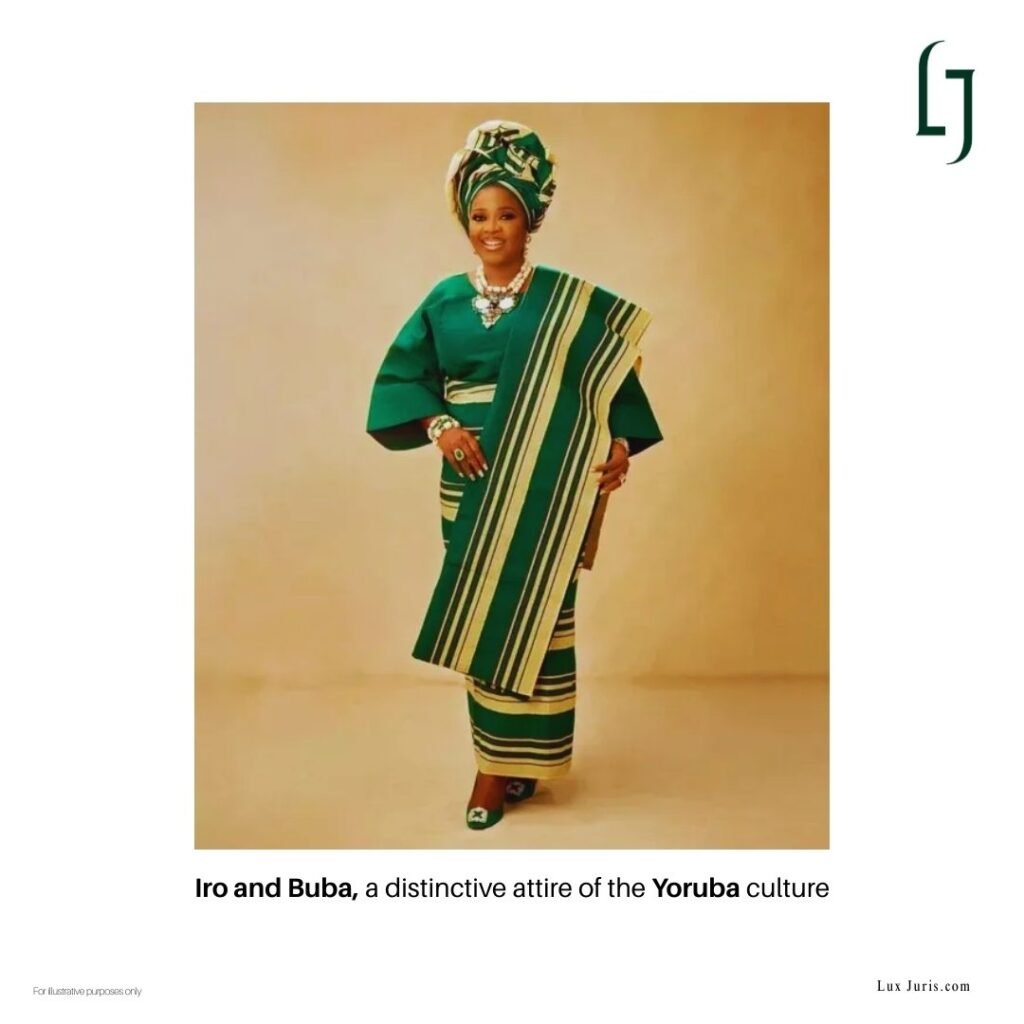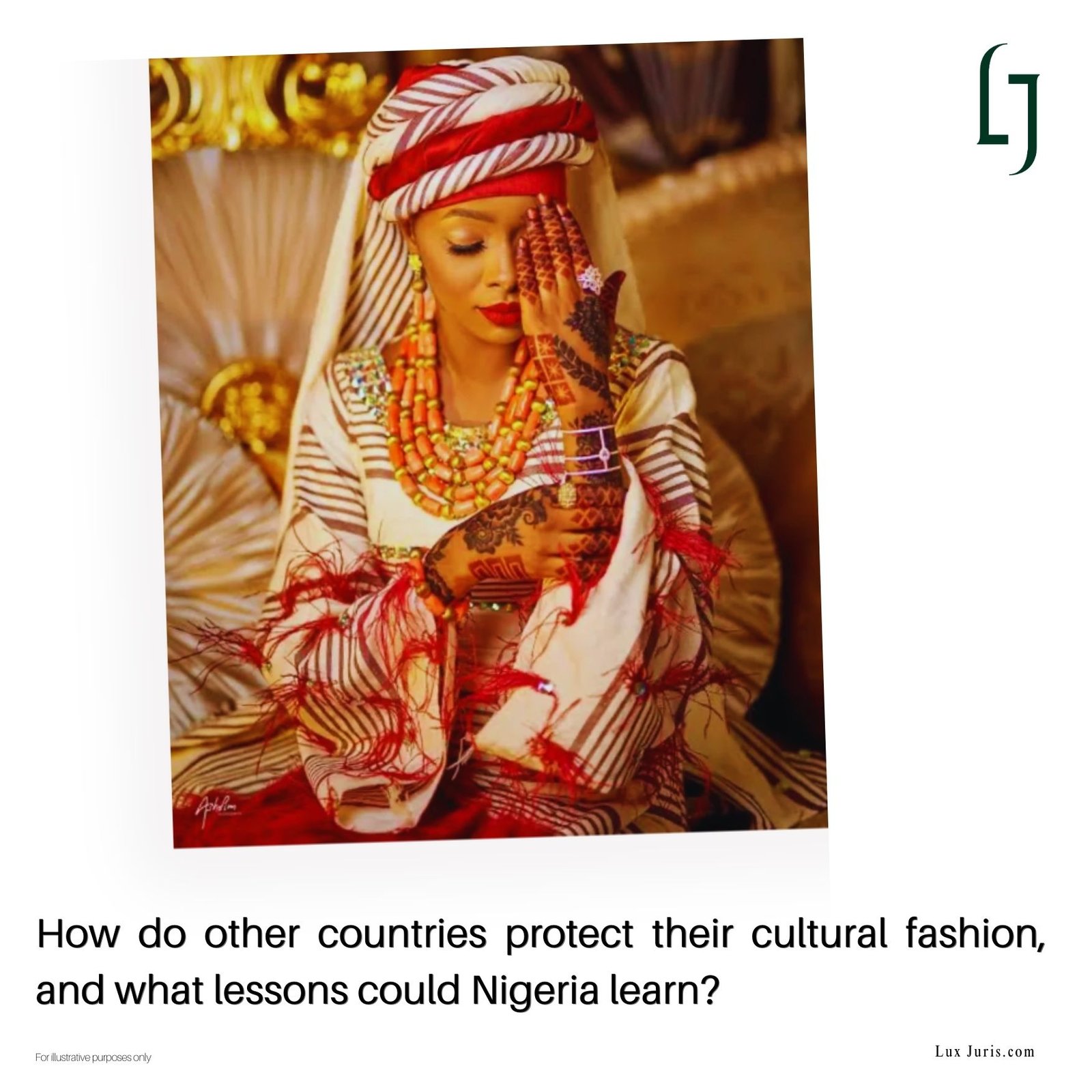Cultural misappropriation of traditional fashion expressions in nigeria and the urgent need for a sui generis framework
Nigeria is a country rich in cultural diversity, home to over 250 indigenous ethnic groups. Each of these groups has fashion expressions unique to its heritage. The Yoruba’s Aso Oke, the Igbo’s George wrapper and beads, and the Hausa-Fulani’s Babban Riga and turban are examples of styles that carry deep cultural significance. These designs are often passed down through generations and are closely tied to rituals, ceremonies, and social identity.
What Do Traditional Fashion Expressions Mean?
Traditional fashion expression is a subset of the larger IP area, Traditional Cultural Expression. As it has been defined by the World Intellectual Property Organization, “traditional cultural expressions may include music, dance, art, designs, names, signs and symbols, performances, ceremonies, architectural forms, handicrafts and narratives, or many other artistic or cultural expressions.” Also, Art. 4(3) of the UNESCO Convention on the Protection and Promotion of the Diversity of Cultural Expressions defines “cultural expressions” as “those expressions resulting from the creativity of individuals, groups and societies and that have cultural content.”
Traditional fashion expressions go beyond mere clothing. They embody the culture, identity, values, and heritage of a people or community. In Nigeria, this encompasses fabrics such as Aso Oke, Ankara, Adire, and George, alongside distinctive styles, patterns, headgear, beadwork, and embroidery. Equally important is the symbolic meaning behind how these items are worn and adorned, reflecting social status, rituals, and cultural narratives.

Cultural Misappropriation
In Nigeria, the fashion industry is growing fast, thanks to the creativity of local designers, rich cultural traditions, and growing international attention. But as the traditional fashion industry grows, it becomes much more susceptible to the prying eyes of exploitation and the greedy hands of misappropriation. Hence, the strong need for better laws to protect the ideas, designs, and hard work of these fashion creators.
Cultural misappropriation happens when a person or company, especially one outside a particular culture, takes or uses cultural elements, like fashion, without permission or respect for their significance. In the Nigerian context, this often occurs when traditional designs or patterns are copied by fashion houses or international designers without giving credit or paying anything to the communities that created them or from where they originate.
This can be harmful because it strips the cultural item of its meaning, gives no recognition or benefit to the original creators, and may even present the fashion item as a new, original idea, thus erasing the community behind it. In some cases, these copied designs are even patented or copyrighted abroad, preventing the original creators from using what is rightfully theirs.
The Current Regulatory Frameworks in Nigeria
Nigeria does have laws protecting intellectual property (IP), including copyright, trademarks, patents, and industrial designs. However, these laws are either silent or not fully effective in protecting traditional cultural expressions (TCEs), such as traditional fashion.
Section 2(1)(c) of the Copyright Act, 2022 provides protection for works of artistic craftsmanship. This protection can extend to certain traditional cultural expressions, particularly folk music and storytelling. Section 43 of the Trademarks Act further safeguards signs, symbols, and marks that certify specific goods being traded. While this framework could, in theory, be applied to traditional designs as a form of Geographic Indication (GI) protection, these certification marks fall short of true GI protection. They do not indicate commercial origin but merely confirm that goods meet a particular standard or quality. As a result, communities are often denied the formal recognition of origin that their traditional designs merit.

Traditional designs often fail to meet the strict originality or authorship requirements of existing laws. For instance, who can claim ownership of Adire patterns that have existed for generations? These expressions are usually collectively held by communities, not individuals, making them difficult to register under IP systems built for individual authorship. Even when a community member registers a design, it rarely captures or safeguards the cultural meaning behind it. The current individualistic IP framework is therefore ill-suited to protect such communal traditions.
Furthermore, there is a lack of awareness among traditional artisans and fashion communities about how to navigate these legal protections. Enforcement is also weak and the process, cumbersome and slow, with very few cases successfully prosecuted. This is more especially when powerful brands are involved.
A Case for the Introduction of a Sui Generis Framework
Because existing laws do not succinctly cater for traditional fashion expressions, there is a growing call for a sui generis (i.e. unique or custom-made) framework. This means creating a special legal system that fits the nature of traditional cultural expressions, instead of trying to force them into Western-style IP laws. Such a framework would be designed to recognize collective ownership by communities. It would protect designs even if their creators are unknown or if they have been passed down over time, allowing benefits such as royalties or recognition to flow back to the communities where these designs originate.

Therefore, such a law would empower indigenous Nigerian communities to collectively control their cultural heritage and benefit from its use, especially in the global fashion market. It would also foster collaboration, rather than exploitation, between fashion brands and cultural custodians. This would serve to effectively bolster the Nigerian traditional fashion economy, promote sustainability and encourage innovation. If two heads are better than one, then why can’t we have a global fashion market working hand-in-hand with a creative community?
Lessons from Other Jurisdictions
The sui generis framework is not an inherently abstract or infeasible idea; other countries have faced similar problems and taken steps to protect their cultural expressions. Nigeria can learn from their experiences and tailor these lessons to its unique cultural contexts.
India
Geographical Indications (GI) are a form of intellectual property protection that depicts the region of origin of a particular IP product. Using that protection form, India has developed a peculiar system that protects traditional crafts like Banarasi sarees and Pashmina shawls.[1] It links the craft to the region and culture that created it, thereby opening up room for communal recognition and economic expansion.
New Zealand
The country of New Zealand has worked with the Māori people to recognize their cultural rights and has introduced patent and trademark laws to protect the knowledge of these people (Mātauranga Māori).[2] These IP protection forms are specifically engineered to safeguard the cultural expressions of the Māori community.
Panama
According to WIPO, Panama, in 2006, passed the sui generis Law 20 specifically to protect the traditional designs of the Kuna people,[3] such as the molas. This law prevents commercial use of Kuna designs without community consent.
These examples show that with political will and community involvement, a sui generis system can work. Nigeria can build a law that respects its diverse cultures while supporting creativity and innovation in fashion.
Recommendations
The bull’s-eye of the sui generis framework is not an impossible target for the Nigerian intellectual property frameworks. The following tips would be invaluable in achieving that aim:
Community involvement in the drafting and development of the framework would ensure inclusivity, especially in a heterogeneous society like Nigeria. This should be supported by public education programmes to inform communities, policymakers and designers about the nature of the rights being granted them.
A national cultural register documenting designs, patterns and crafts as well as policies supporting fair and balanced collaboration between cultural artisans and fashion brands are also encouraged.
Finally, collaboration with international or regional bodies like WIPO (World Intellectual Property Organization) and ARIPO (African Regional Intellectual Property Organization) strengthens enforcement globally.
Conclusion
Nigeria’s traditional fashion expressions are rich, diverse, and deeply rooted in culture. Yet they face constant threats from misappropriation due to weak legal protection. The current IP system was not built with traditional cultures in mind, and this is why a sui generis framework is urgently needed.
By recognizing and legally protecting these fashion expressions, Nigeria not only preserves its cultural heritage but also economically empowers her indigenous communities. As the global demand for African fashion grows, the country must ensure it remains the giant of Africa, even in the traditional fashion space.
Author: Afor God’sfavour | Research: Afor God’sfavour | Editor: Qazi
Sources:
[1] https://www.ibef.org/discover-india/giofindia-2025#:~:text=India’s%20Geographical%20Indication%20(GI)%20products,unique%20qualities%20and%20traditional%20craftsmanship
[2] https://www.iponz.govt.nz/get-ip/maori-ip/#:~:text=Intellectual%20property%20rights%20help%20ensure,the%20protection%20of%20m%C4%81tauranga%20M%C4%81ori.
[3] https://www.wipo.int/wipolex/en/legislation/details/3400
Images:
2.https://www.etsy.com/dk-en/listing/1287240429/greorge-igbo-bride-new-white-and-gold
